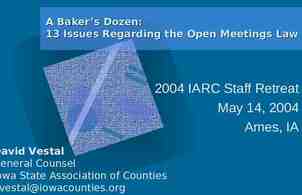Company LOGO Internet Of Things (IoT) Prepared By: Virendra
19 Slides946.48 KB
Company LOGO Internet Of Things (IoT) Prepared By: Virendra Singh Thakur GTU PG School, Ahmedabad Mo. 91-9662404549
Agenda 1. 1. What What is isIoT IoT? 2. 2. Web Web of of Things Things 3. 3. IoT IoT Standardization Standardization 4. 4.Applications Applications
What is Internet Of Things The Internet of Things (IoT) is the network of physical objects accessed through the Internet, as defined by technology analysts and visionaries. These objects contain embedded technology to interact with internal states or the external environment. In other words, when objects can sense and communicate, it changes how and where decisions are made, and who makes them.
The Web of Things
Internet Of Things Contd. In the future, digital sensing, communication, and processing capabilities will be ubiquitously embedded into everyday objects, turning them into the Internet of Things (IoT). Smart devices will collect data, relay the information or context to each other, and process the information collaboratively.
Internet Of Things Contd. An IoT system is a network of networks where, typically, a massive number of objects/things/sensors/devices are connected through communications and information infrastructure to provide value-added services via intelligent data processing and management for different applications (e.g. smart cities, smart health, smart grid, smart home, smart transportation, and smart shopping).
Internet Of Things Contd. Topics will include IoT system architecture, IoT enabling technologies, IoT services and applications, and the social implications of IoT. The fields of interest include, but are not limited to:
Internet Of Things Contd. IoT services, applications, standards, and test-beds such as streaming data management and mining platforms, service middleware, open service platform, semantic service management, security and privacy-preserving protocols, design examples of smart services and applications, and IoT application support.
Internet Of Things Contd. IoT enabling technologies such as sensors, radio frequency identification, low power and energy harvesting, sensor networks, machine-type communication, resource-constrained networks, realtime systems, IoT data analytics, in situ processing, and embedded software.
Internet Of Things Contd. IoT architectures such as things-centric, data-centric, service-centric architecture, CPS and SCADA platforms, future Internet design for IoT, cloud-based IoT, and system security and manageability.
Internet Of Things Contd. Presentations from Buyers of the Internet of Things by market vertical Consumer services and smart homes Automotive and transit Health care Smart Energy: smart meters and grids Logistics, supply chain Oil, gas, manufacturing and industrial
Key IoT Standardization IETF 6LoWPAN Working Group (IPv6 anywhere) ROLL (Routing Over Low-power Loosely Networks) WG CoRE WG (REST for IoT, CoAP, Resource Directory etc.) TLS WG (DTLS)
Key IoT Standardization OMA Lightweight M2M Enabler Standard (CoAP/DTLS based) Device Management 2.0 Enabler Standard (HTTP/TLS based)
Key IoT Standardization ETSI / OneM2M Ongoing work on M2M system standardization (CoAP, HTTP binding) W3C Efficient XML Interchange (EXI) standardisation ZigBee IP An open-standard 6LoWPAN stack for e.g. Smart Energy 2.0
Example Applications Smart Energy & Lighting
Example Applications Health & Fitness
Example Applications Building Automation
Example Applications Asset Management
Thank You. References: www.cisco.com/web/solutions/trends/iot/overview.htm www.sap.com/pc/tech/internet-of-things.htm
























